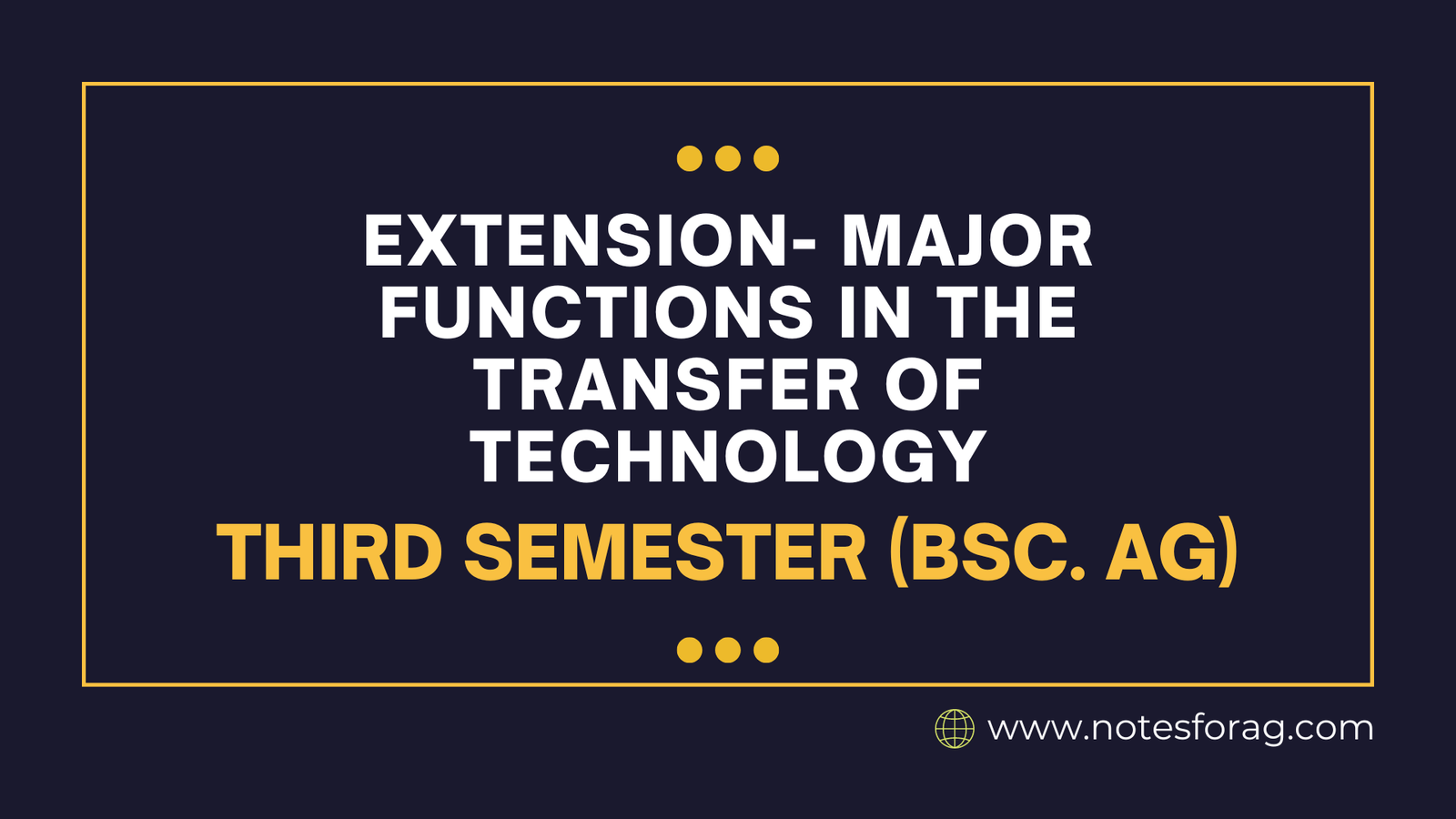Extension services facilitate technological transfer by bridging the gap between research organizations and farmers. Their primary responsibilities include educating and training farmers about new technologies, disseminating information via multiple media, offering consulting services for issue resolution and decision-making, and exhibiting innovations through on-farm trials.
Table of Contents
Introduction to Technology Transfer and Extension Services
Technology transfer is the process by which new technological advancements and research discoveries are distributed from research institutions, such as universities and government laboratories, to a variety of stakeholders, including industries, farmers, and customers. This process is critical in both the agricultural and non-agricultural sectors because it ensures that scientific and technological developments provide concrete benefits to society.
Extension services act as an important link in the technology transfer process. These services are intended to bridge the gap between research institutions and end users by making knowledge and technology more widely available. The agents, who are frequently specialists in their disciplines, collaborate directly with stakeholders to demonstrate and promote the adoption of new technologies, give training and assistance, and assist in tailoring innovations to local needs and conditions.
Major Functions of Extension
1. Education & Training
- Awareness and knowledge dissemination: Extension programs teach farmers about new technologies, farming techniques, and innovations through workshops, demonstrations, and field trips.
- Skill Development: They provide hands-on training to farmers so that they can better implement new techniques and technologies.
2. Information dissemination
- Communication of research findings: They serve as a link between researchers and farmers, transforming difficult research into practical, actionable knowledge for farmers to employ.
- Use of multiple channels: Information is spread through a variety of means, including print media, radio, television, mobile apps, and social media.
3. Advisory Services
- Problem Solving: Extension agents provide advice and answers to farmers’ specific challenges, such as pest infestations, soil fertility difficulties, and crop diseases.
- Decision Support: They assist farmers in making informed decisions by offering data and analysis on market trends, weather forecasts, and crop management strategies.
4. Demonstration of Technologies
- On-farm trials: Extension agencies undertake on-farm demonstrations to demonstrate the efficacy of new technology in local settings.
- Model farms: Establishing model farms that effectively integrate new technology can encourage and motivate other farmers to follow suit.
5. Facilitation of Technology Adoption
- Linking Farmers With Resources: Extension services assist farmers in obtaining the necessary inputs (seeds, fertilizers, equipment) and financial resources to implement new technologies.
- Follow-up and Support: Continuous assistance and follow-up are offered to ensure the successful adoption and adaptation of technologies.
6. Feedback to Research
- Communication about Farmers’ Needs: Extension personnel gather feedback from farmers on the issues they face, which is then transmitted back to researchers to direct future study.
- Evaluation of Technology Performance: They offer researchers with vital data on how new technologies operate in the field, allowing them to refine and improve technology.
7. Community Mobilization and Development
- Group Formation and Leadership: Extension services assist farmers in forming clubs, cooperatives, and associations that can collectively adopt new technology and practices.
- Promoting Social Change: They promote behavioral and social changes in communities, resulting in enhanced livelihoods and sustainable development.
8. Market Linkages
- Connecting Farmers and Markets: Extension services help farmers access local, national, and international markets, ensuring that the technology they use is economically feasible.
- Value Addition and Processing: They encourage technology that add value to agricultural products, hence increasing farmers’ earning opportunities.
These functions are crucial to ensure that technology transfers result in real benefits in agricultural productivity, sustainability, and rural livelihoods.
What is the role of extension services in technology transfer?
Extension services are essential in bridging the gap between research and practical application by teaching farmers about new technology, providing hands-on training, and providing advising services. They ensure that scientific breakthroughs are communicated to the farming community in an understandable and implementable format.
How do extension services facilitate the adoption of new technologies?
Extension services provide farmers with the resources they need to implement new technology, such as seeds, fertilizers, and financial help. They also offer continuing assistance and follow-up to ensure the successful adoption and adaptation of these technologies.
Related Articles

